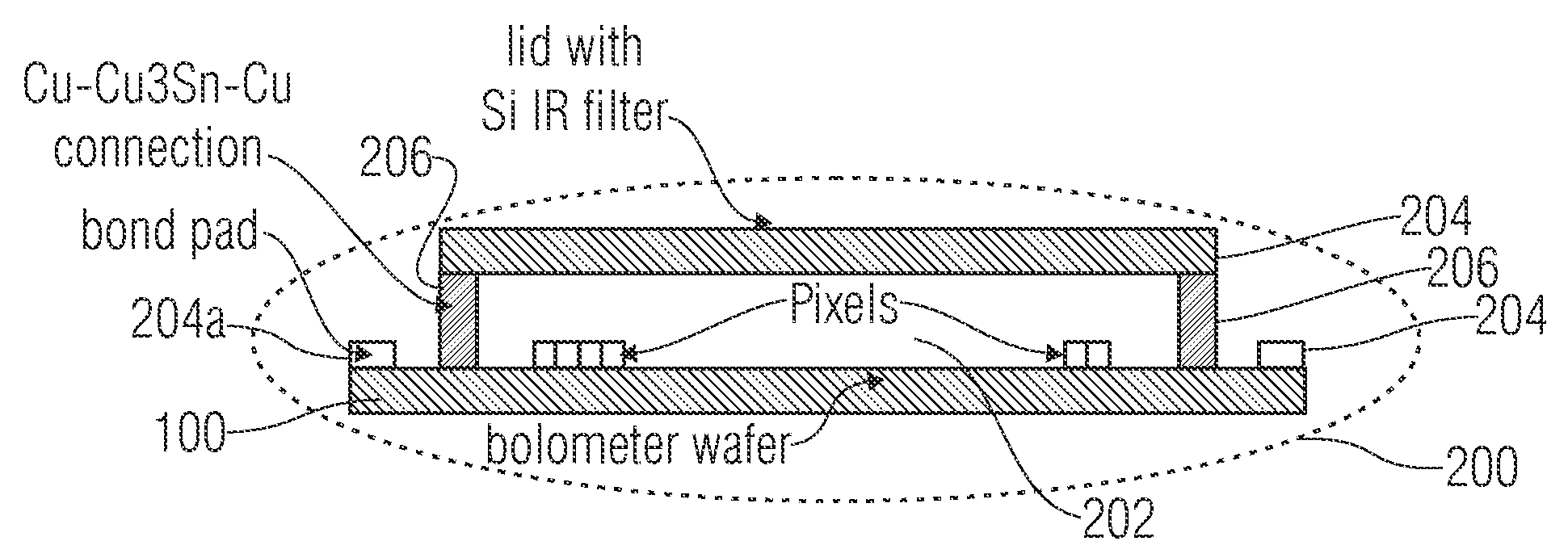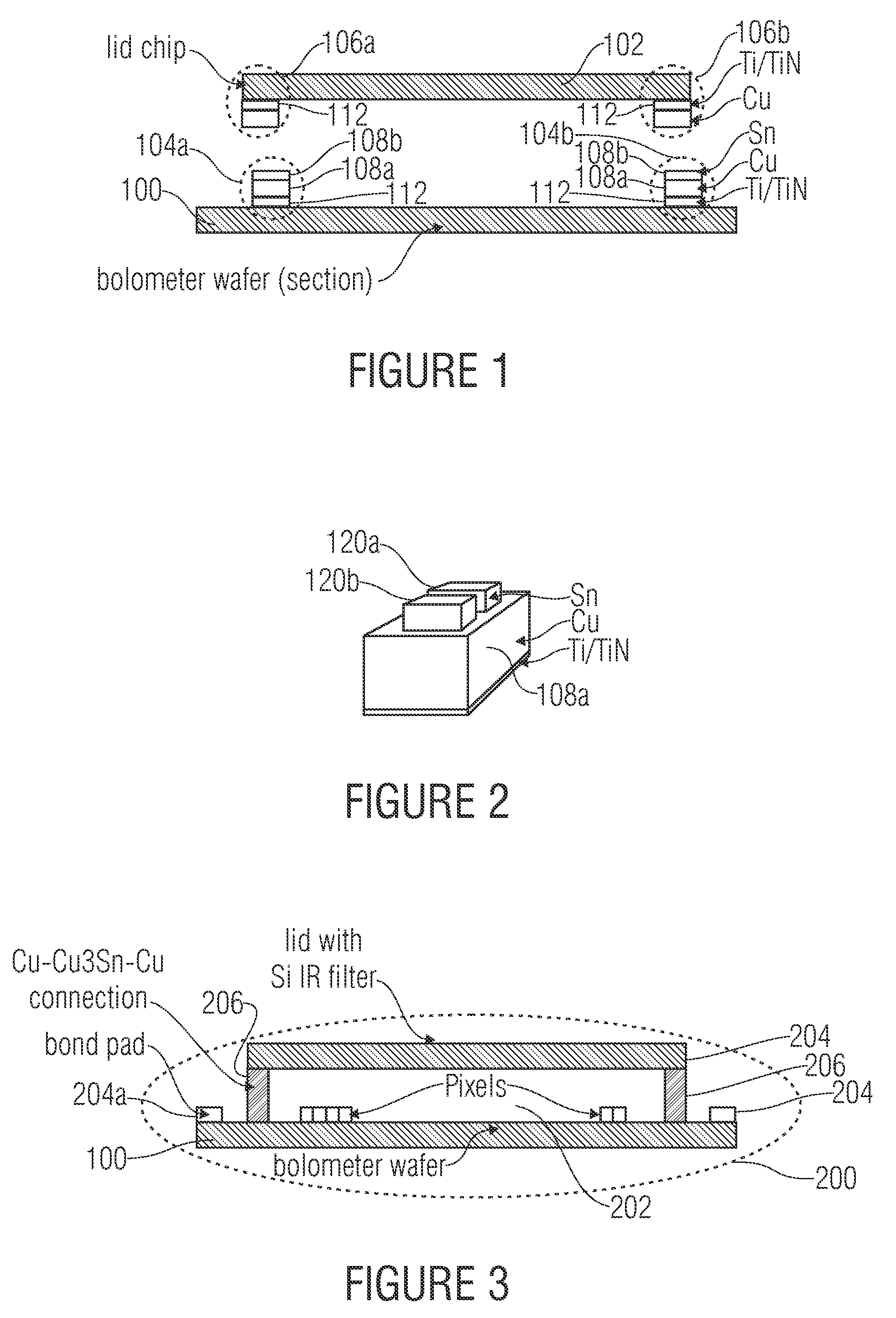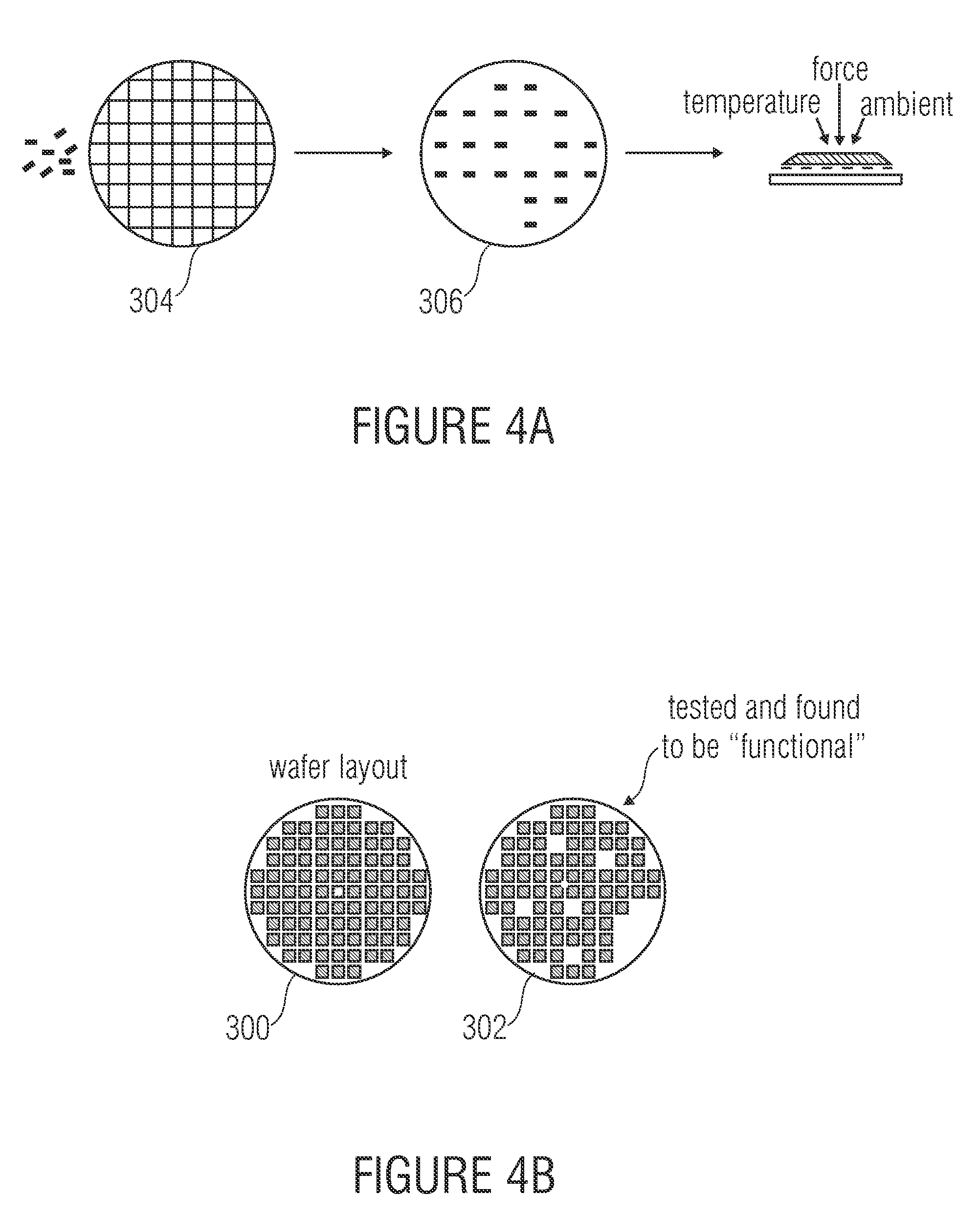Package comprising an electrical circuit
a technology of electrical circuits and electrical components, applied in the field of electrical circuit packaging, can solve the problems of affecting the functionality of the sensor, placing the package on the package, and distorted the quantity to be measured by the sensor by the package, and achieve the effect of increasing the process throughpu
- Summary
- Abstract
- Description
- Claims
- Application Information
AI Technical Summary
Benefits of technology
Problems solved by technology
Method used
Image
Examples
Embodiment Construction
[0041]FIG. 1 shows an example of substrates for creating a package which have been prepared in accordance with the invention.
[0042]FIG. 1 shows a first substrate 100, or a wafer, only a portion of a wafer being shown here, said wafer comprising several of the portions shown in FIG. 1.
[0043]In addition, a second substrate, or a lid chip, 102 is depicted.
[0044]In the sectional view of the wafer 100 and of the lid chip 102, cross-sections of frames 104a and 104b enclosing an electrical circuit on the wafer 100 are also shown on the wafer 100. The inventive complementary counterparts, frames 106a and 106b of the second substrate or lid chip 102, are also depicted in FIG. 1.
[0045]In accordance with the invention, the frame of at least one of the substrates consists of a layer sequence of two metals which together may form an alloy whose the melting point is higher than the melting point of the lower-melting one of the two metals. The frame(s) 104a and / or 104b therefore consists of a firs...
PUM
 Login to View More
Login to View More Abstract
Description
Claims
Application Information
 Login to View More
Login to View More - R&D
- Intellectual Property
- Life Sciences
- Materials
- Tech Scout
- Unparalleled Data Quality
- Higher Quality Content
- 60% Fewer Hallucinations
Browse by: Latest US Patents, China's latest patents, Technical Efficacy Thesaurus, Application Domain, Technology Topic, Popular Technical Reports.
© 2025 PatSnap. All rights reserved.Legal|Privacy policy|Modern Slavery Act Transparency Statement|Sitemap|About US| Contact US: help@patsnap.com



